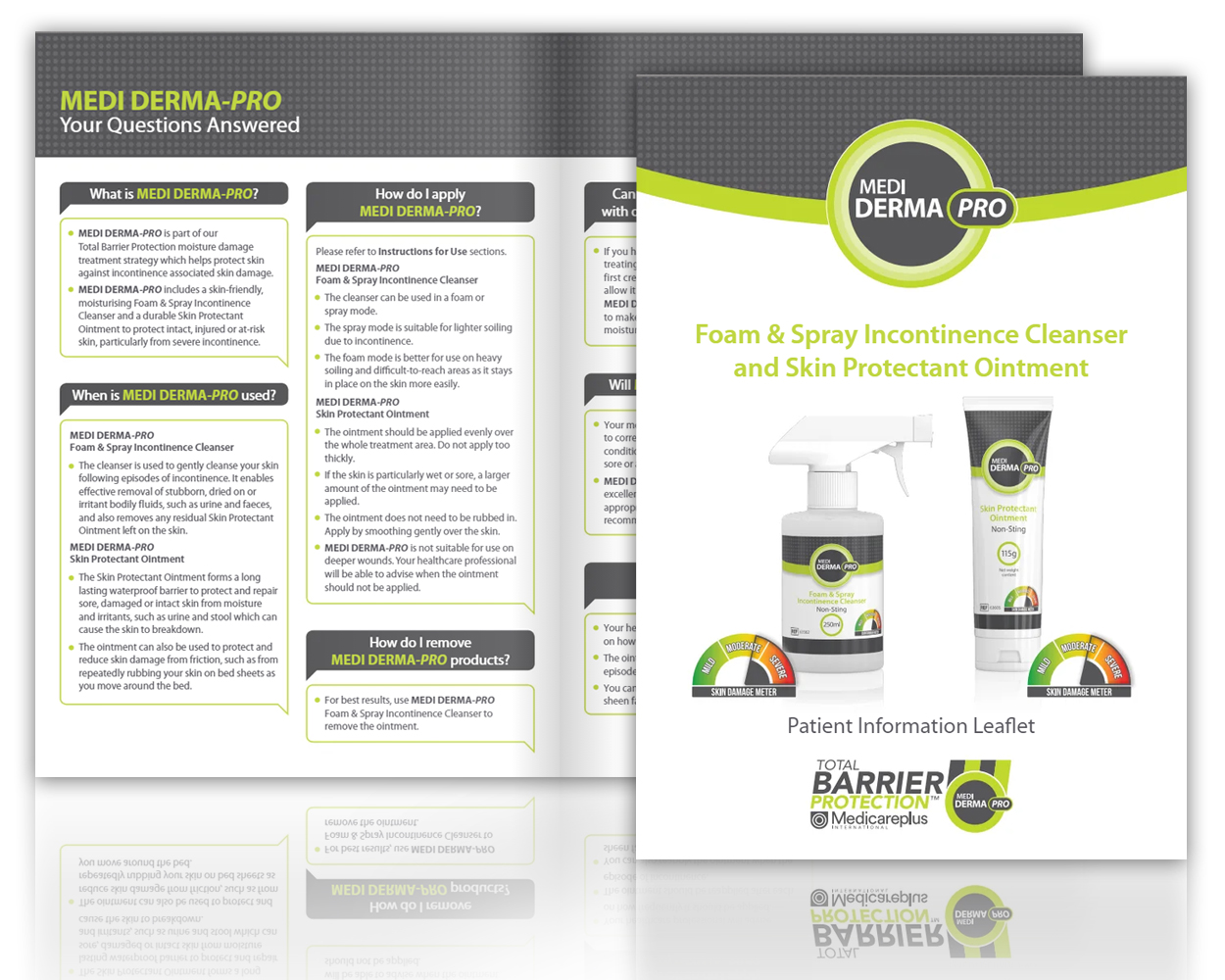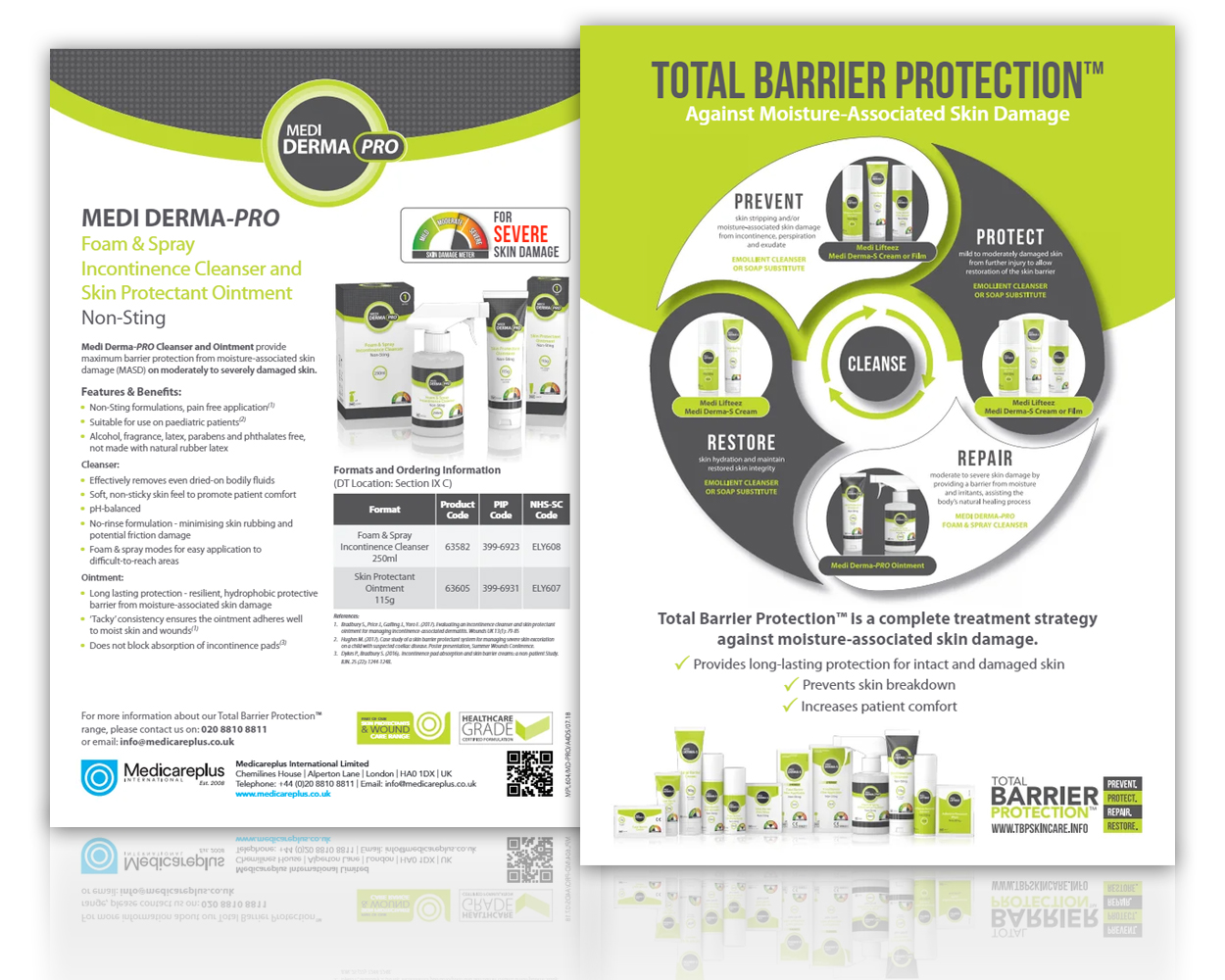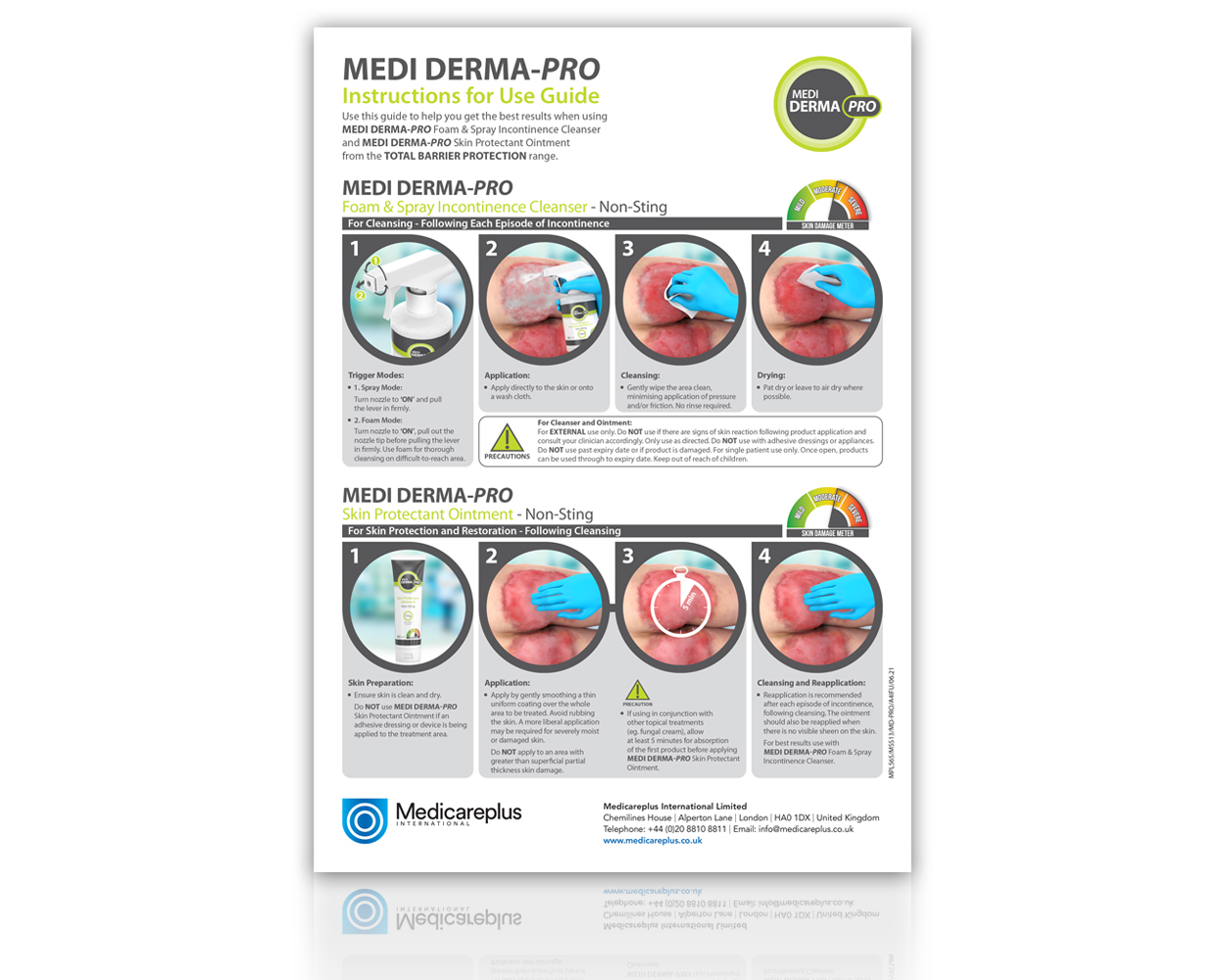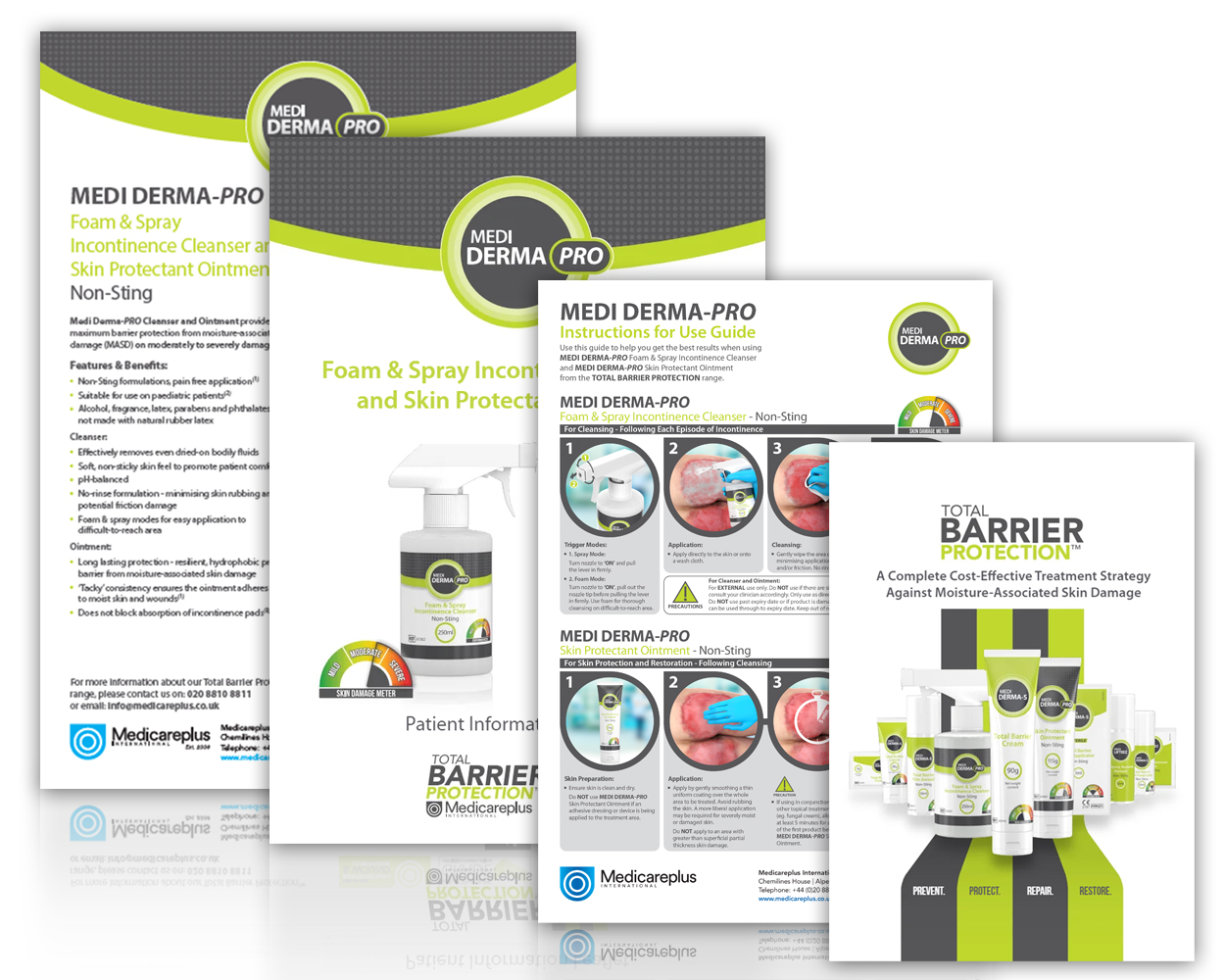Medi Derma-PRO Ointment and Cleanser
Provides maximum barrier protection on moderate/severe skin damage.
Topics: Any Patient Group, Continence Care, Elderly Patients, Neonatal & Paediatrics, Palliative or End of Life Care, Skin Care for Stoma, Wound Care
Features & Benefits:
Indications for Use:
- Elderly patients
- Paediatric patients
- Intact skin
- Injured skin (e.g. excoriated and partial thickness wounds up to grade II associated with incontinence)
- To protect from skin damage associated with incontinence, exudate, friction and shear
- To help reduce the risk of incontinence associated dermatitis
- To moisturise clinically dry skin and leave skin supple and hydrated
Features & Benefits:
- Non-Sting formulations, pain free application(1)
- Can be applied to damaged and intact skin(1)
- Suitable for use on Paediatric patients(2)
- Alcohol, Fragrance, Latex, Parabens and Phthalates Free
Cleanser:
- Effectively removes even dried-on bodily fluids
- Soft, non-sticky skin feel to promote patient comfort
- pH-balanced
- No-rinse formulation minimises skin rubbing and potential friction damage
- Foam & spray modes allow for easy application to even difficult to reach areas
Ointment:
- Long Lasting Protection– Resilient, hydrophobic protective barrier from moisture associated skin damage
- ‘Tacky’ consistency ensures the ointment adheres well to moist skin and wounds(1)
- Can be used underneath incontinence pads as it does not block pad absorption(3)
References:
- Bradbury S, Price J, Yoro E et al. (2017) Clinical evaluation of an incontinence cleanser and skin protectant ointment for managing incontinence-associated dermatitis. Wounds UK. In Print.
- Hughes M (2017) Use of a Skin Barrier Protectant for Managing Severe Skin Excoriation on a Child with Suspected Coeliac Disease. Abstract submitted for poster presentation.
- Dykes P, Bradbury S (2016) Incontinence Pad Absorption and Skin Barrier Creams: A Non-Patient Study. BJN. 25 (22): 1244-1248.
Ordering Information:
| Description | Pack size | Price inc. VAT |
SKU | Stock |
| Skin Protectant Ointment 115g | Pack size: 1 | Price (inc. VAT): £16.00 | SKU: 63605 | Stock: In stock |
| Foam & Spray Incontinence Cleanser 250ml | Pack size: 1 | Price (inc. VAT): £11.99 | SKU: 63582 | Stock: In stock |
** Kindly note that we currently ship orders via our website only to
England, Wales and Scotland.
If you are based outside these countries, please email your requirements to sales@medicareplus.co.uk with your best contact details and we will get in touch as soon as possible.
Please note that FREE delivery for orders over £36 including VAT does not apply for subscription items.
Additional Ordering Information
| Product | Product Code | PIP Code |
| Skin Protectant Ointment 115g - 1 pack | Product Code: 63605 | PIP Code: 399-6931 |
| Foam & Spray Incontinence Cleanser 250ml - 1 pack | Product Code: 63582 | PIP Code: 399-6923 |









 Success!
Success!